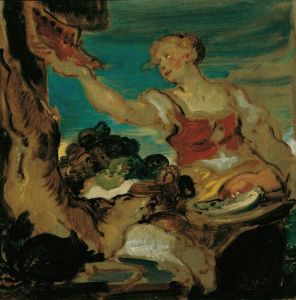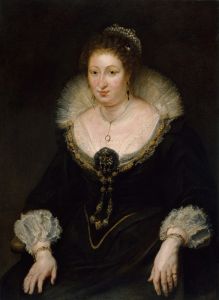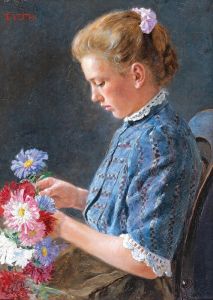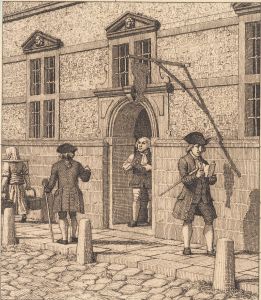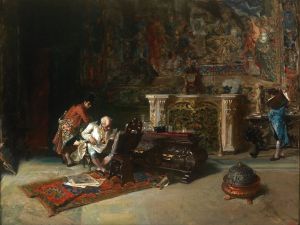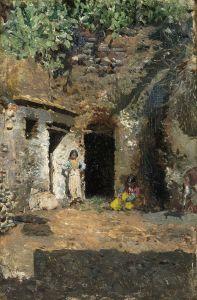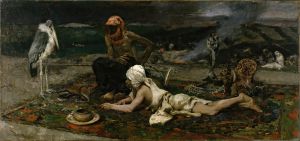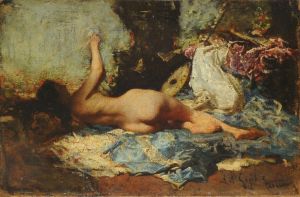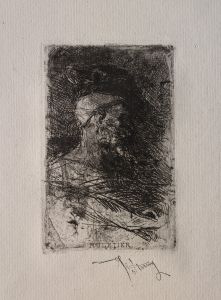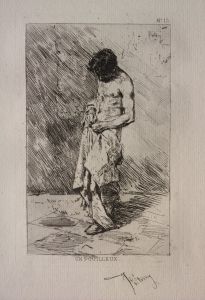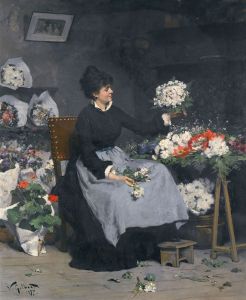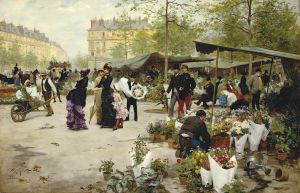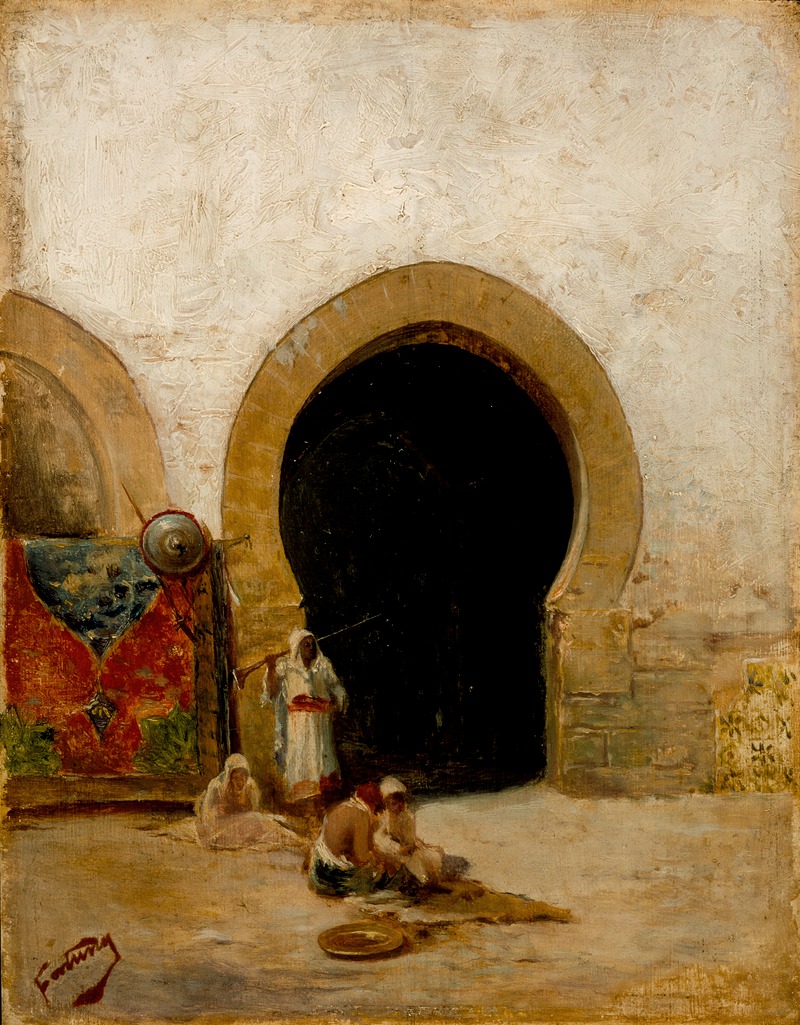
At the Gate of the Seraglio
A hand-painted replica of Mariano Fortuny Marsal’s masterpiece At the Gate of the Seraglio, meticulously crafted by professional artists to capture the true essence of the original. Each piece is created with museum-quality canvas and rare mineral pigments, carefully painted by experienced artists with delicate brushstrokes and rich, layered colors to perfectly recreate the texture of the original artwork. Unlike machine-printed reproductions, this hand-painted version brings the painting to life, infused with the artist’s emotions and skill in every stroke. Whether for personal collection or home decoration, it instantly elevates the artistic atmosphere of any space.
Mariano Fortuny Marsal, a prominent Spanish painter of the 19th century, is known for his detailed and vibrant works that often depict historical and genre scenes. One of his notable paintings is "At the Gate of the Seraglio," which exemplifies his skill in capturing intricate details and his interest in Orientalist themes.
"At the Gate of the Seraglio" was painted during a period when Orientalism was a popular theme among European artists. This movement was characterized by the depiction of Eastern cultures, often romanticized and imagined through a Western lens. Fortuny, like many of his contemporaries, was fascinated by the exoticism and allure of the East, which is reflected in this painting.
The painting portrays a scene at the entrance of a seraglio, which is a term used to describe the sequestered living quarters used by wives and concubines in an Ottoman household. The setting is rich with architectural details that suggest an opulent and culturally distinct environment. Fortuny's attention to detail is evident in the intricate patterns and textures of the clothing and architecture, which are rendered with precision and care.
Fortuny's use of color and light in "At the Gate of the Seraglio" is particularly noteworthy. He employs a vibrant palette that enhances the exotic atmosphere of the scene. The interplay of light and shadow adds depth and dimension, drawing the viewer into the world he has created. This mastery of color and light is a hallmark of Fortuny's style and contributes to the painting's overall impact.
The figures in the painting are depicted with a sense of realism and individuality. Fortuny was known for his ability to capture the nuances of human expression and posture, and this is evident in the way he portrays the characters at the gate. Each figure seems to have a distinct personality and role within the scene, adding to the narrative quality of the work.
"At the Gate of the Seraglio" reflects Fortuny's broader interest in historical and cultural subjects. Throughout his career, he traveled extensively, drawing inspiration from the places he visited and the people he encountered. This painting, like many of his works, demonstrates his ability to blend historical accuracy with artistic imagination.
Mariano Fortuny Marsal's contribution to the art world extends beyond his paintings. He was part of a broader movement that sought to explore and depict the diverse cultures of the world, albeit through a Western perspective. His works, including "At the Gate of the Seraglio," continue to be studied and appreciated for their technical skill and their role in the history of Orientalist art.
In summary, "At the Gate of the Seraglio" is a testament to Mariano Fortuny Marsal's artistic talent and his fascination with the exotic themes of the East. Through his meticulous attention to detail, masterful use of color and light, and ability to convey narrative through his figures, Fortuny created a work that captures the imagination and transports the viewer to a different time and place.





